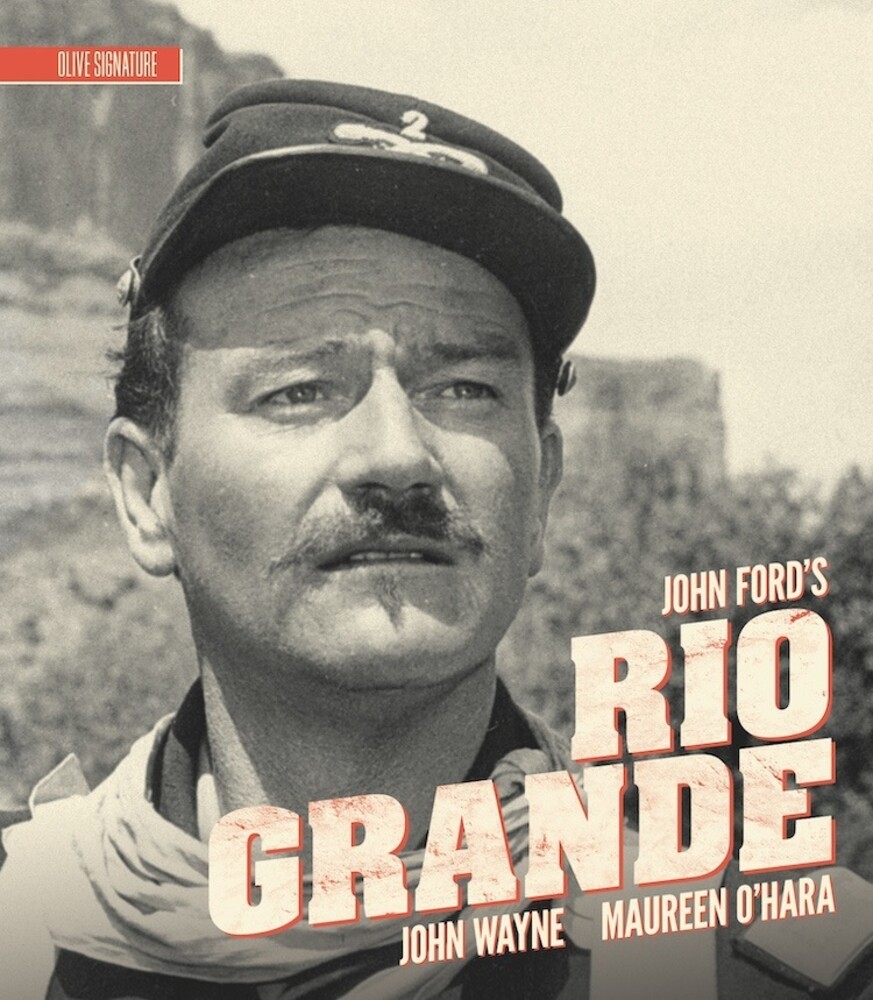
The Cavalry Trilogy is a famous series of westerns made for RKO Pictures by John Ford (Stagecoach, Young Mr. Lincoln, The Searchers, The Man Who Shot Liberty Valance). Each stared John Wayne and, after 70 years, genre afficionados continue to adore these movies. Fort Apache (1948) and She Wore a Yellow Ribbon (1949) were the first releases, with the latter winning an Academy Award for its striking cinematography. The final feature, Rio Grande, has arrived on Blu-ray with upgraded picture quality and new extras as part of the impressive Olive Signature Collection. And as expected, if you’re a fan of the feature, then this is the version that you need to own.
Set in 1879, Lieutenant Colonel Kirby Yorke (John Wayne) serves as a leader of the Texas Cavalry regiment, stationed to protect settlers from a roving Apache force. The stiff and stoic military man already has plenty to deal with. However, an unexpected issue arises when he learns that his teenage son, Trooper Jefferson Yorke (Claude Jarman Jr.), has just been posted to crew after flunking out of West Point. Kirby, who hasn’t seen his child in 15 years, endeavors to give the boy no special treatment, but the situation grows more complicated when his estranged wife Kathleen (Maureen O’Hara) arrives to check in on the pair. Over the course of the running time, Kirby must deal with enemy forces and try to solve personal tensions that have plagued the family for years.
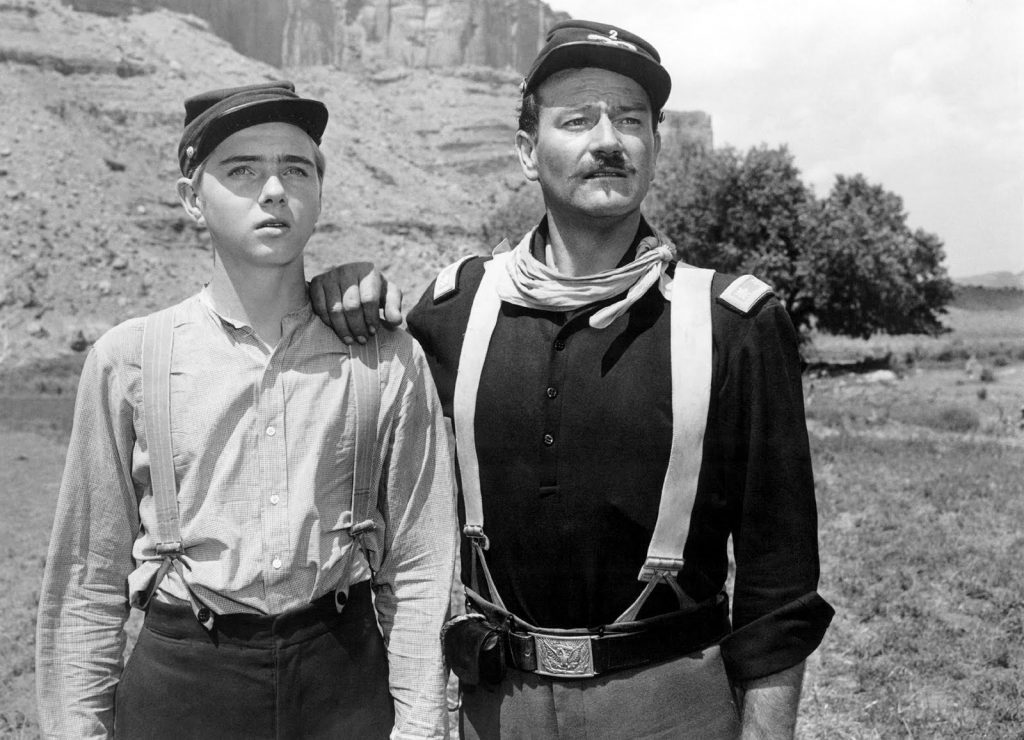
This title was filmed in black and white (as opposed to the previous entry, which was lensed in Technicolor) and may feel a bit smaller in scope. And yet, to some degree this approach works to the movie’s benefit. Wayne’s character isn’t shown as unfailingly heroic or an unstoppable force as he deals with personal issues and squares off in battle. Admittedly, things still progress as one might expect, but more care is taken to show the lead as human and fallible. Viewers also spend a great deal of time with Jefferson, who is coming of age and must learn how to take responsibility in a dangerous and deadly environment.
There’s a lot of elaborate and impressive horse-riding throughout the movie. And the big action finale, which involves the soldiers attempting to free a group of kidnapped children from a church on enemy territory, is very well-edited and displays a great deal of technical skill. While this title may not be as famous as The Searchers, it is a very strong western that benefits from a bigger emphasis on characters (even if they do come across as stereotypes at times). Focusing on their personal states during the crisis helps this film itself apart from others of its ilk. One of its oddest elements is the use of a lot of songs. However, according to experts crooning in the evening hours was common in the barracks during this era.
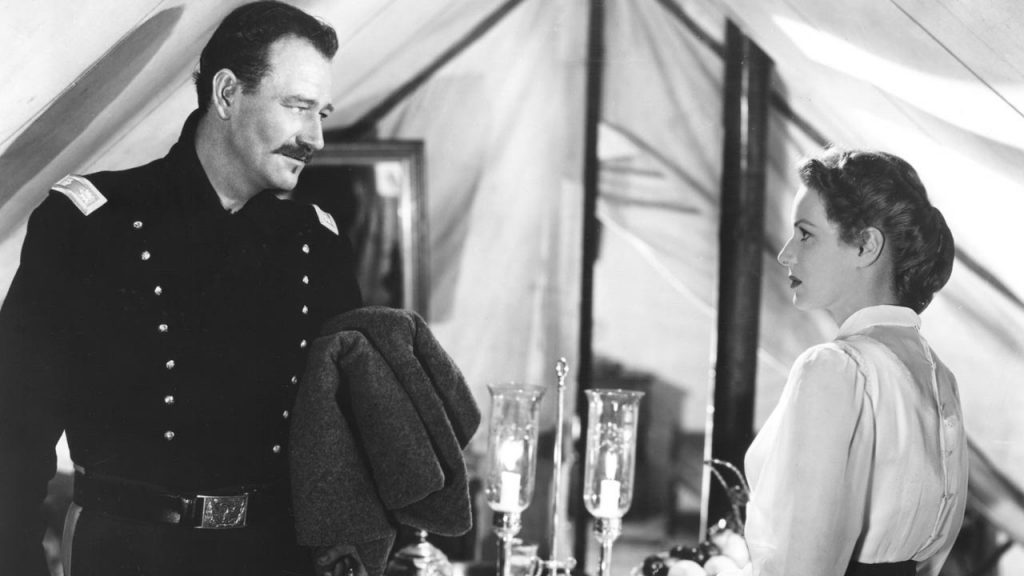
The movie has been given a new high-definition visual restoration and it looks remarkable, with the image quality appearing cleaner than it ever has before. Blacks are nice and inky and everything is remarkably crisp and sharp. And of course, the Blu-ray comes with a large supply of informative and fascinating bonus material that helps one get a sense of what inspired the production and what was going on behind the camera. There’s an excellent commentary from film historian/John Wayne and John Ford authority, Nancy Schoenberger. It really does provide some great insight and details many may not know about.
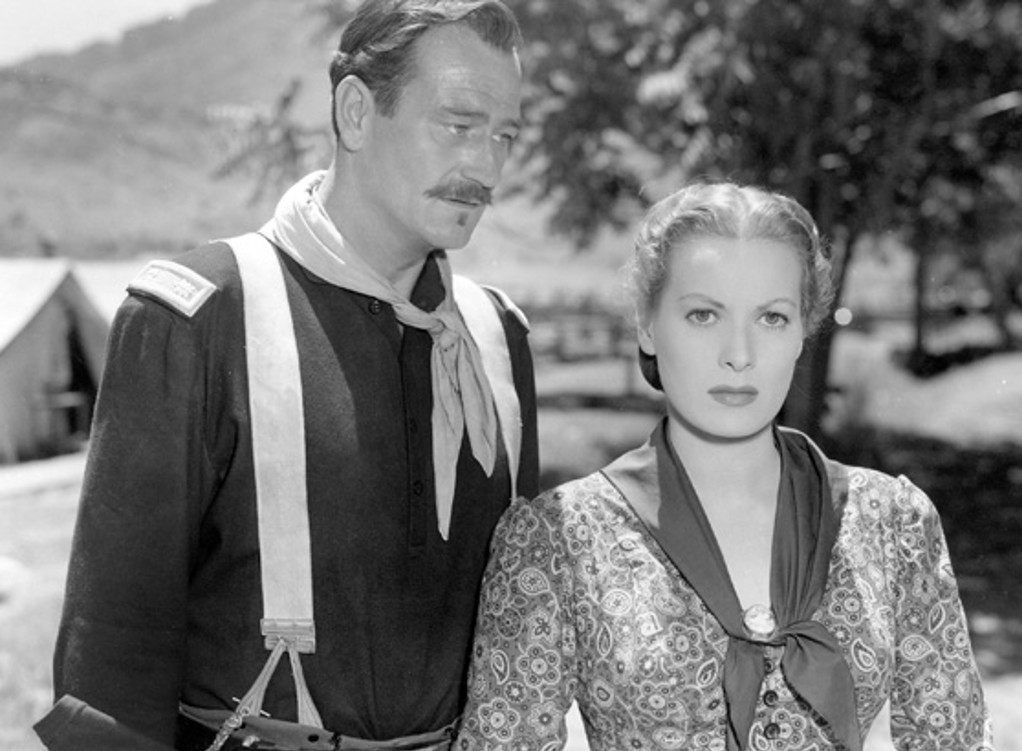
For those, like me, who aren’t overly aware of the history of the movie, Ford and Wayne actually had no intention of making the movie. The director wanted to be done with westerns and was pushing to shoot a pet project he had been working on for years called The Quiet Man. As it turned out, studio executives didn’t particularly like the concept for their Ireland-set romantic comedy and thought it would be a flop. The only way Ford would be granted the financing for his movie would be to shoot another western for the studio. So, he and Wayne relented, calling in O’Hara (who they also wanted for the later project) and set out to complete this movie first. Thankfully, all the professionals involved decided that they should at least attempt to make the best movie possible under the circumstances. So, the famous “Cavalry Trilogy” was never intended to be a serious of films and this moniker was one that followed long after its release. Amusingly, The Quiet Man (which is also available as part of the Olive Signature Collection) was completed and released in 1952 – and it was an even bigger hit than Rio Grande.
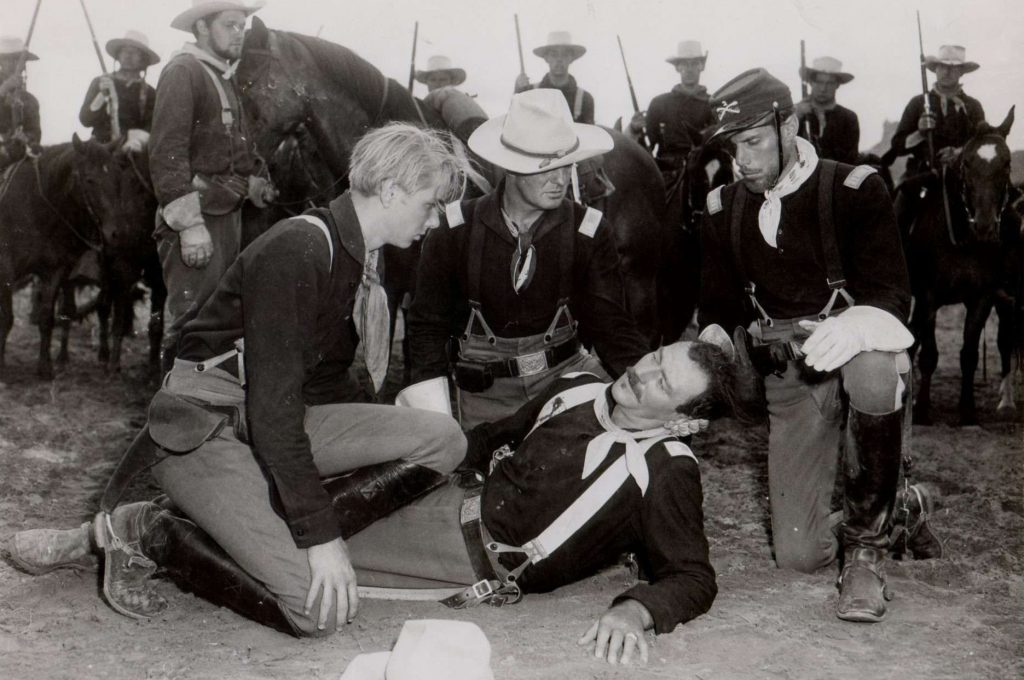
There are plenty of excellent interviews as well, including a recent discussion with Claude Jarman Jr. and his experiences on the set. John Wayne’s son Patrick also discusses being on set and the small part he played in the film. There’s a featurette about the music and the band who performed the many songs featured in the movie. Additionally, there’s a new talk with actor/choreographer Raoul Trujillo (The New World, Apocalypto) about the depiction of Native Americans in the movie. He talks about some of the out-of-date depictions as well as what was done correctly and discusses his work on recent titles. There’s also an archival program with Leonard Maltin tracing the history of the film. Additionally, there is a video essay talking about the themes and showing the scenes to illustrate his point, as well as a trailer and a lengthy essay that comes in the disc’s inner booklet.
Fans of classic westerns will certainly appreciate this disc, with its improved picture quality and bonuses that add more insight into the film. Rio Grande may not be the greatest work of either the filmmaker or the lead actor, but it is a solid western. And this disc’s extras do an excellent job of detailing why it is underrated, as well as detail the small steps it took to try and modernize a few dusty western tropes. If you’re a fan of John Wayne or John Ford, then you can’t go wrong with this Blu-ray and will find it well worth picking up.


